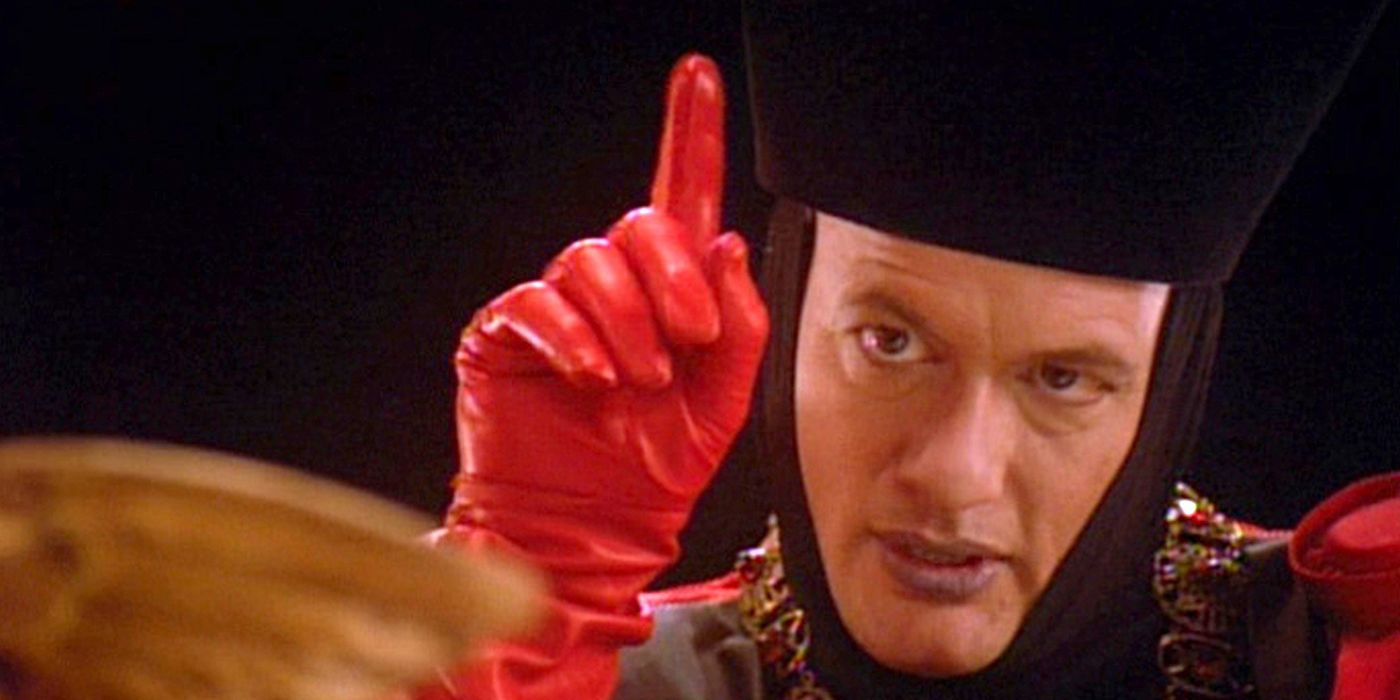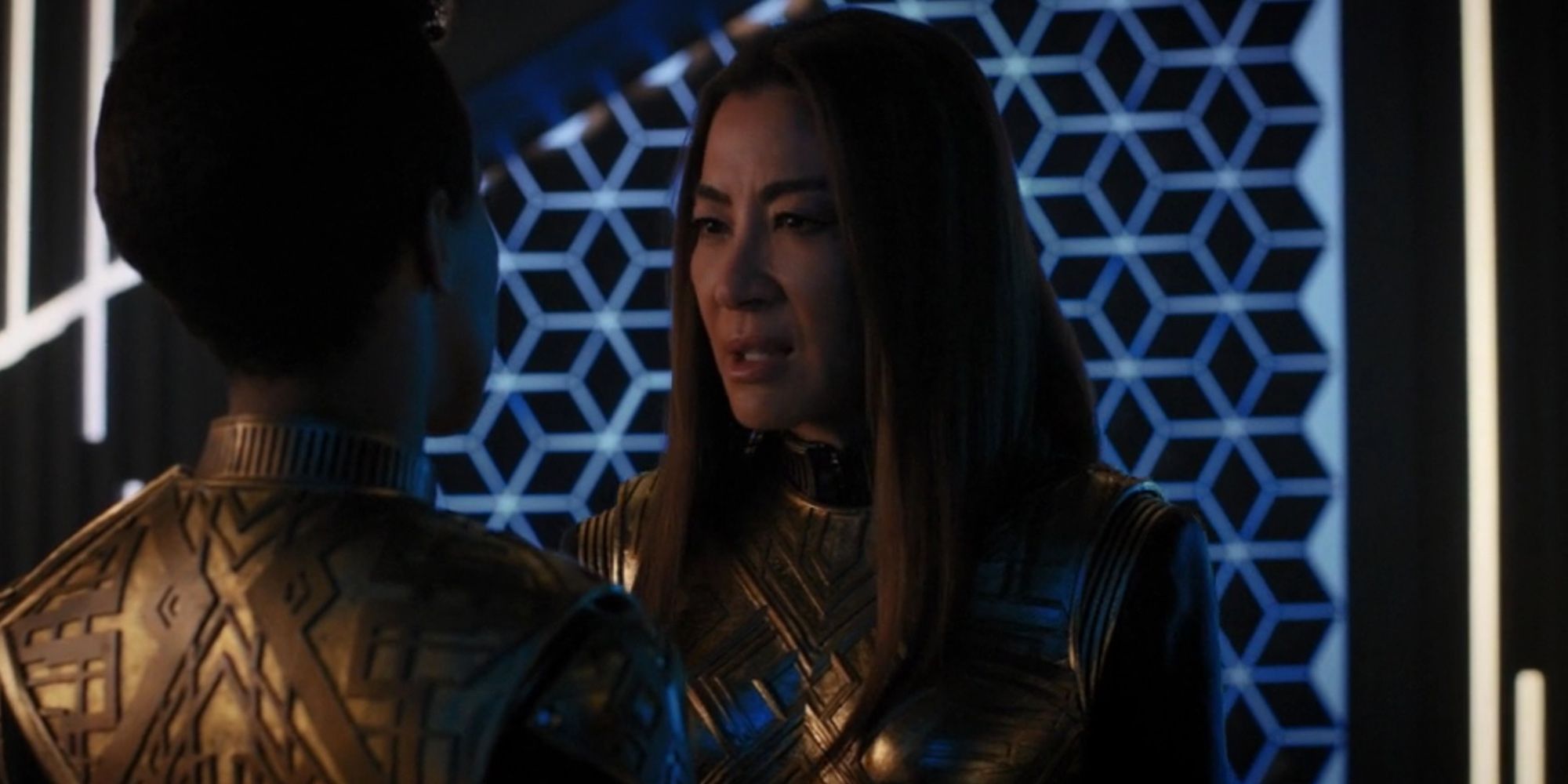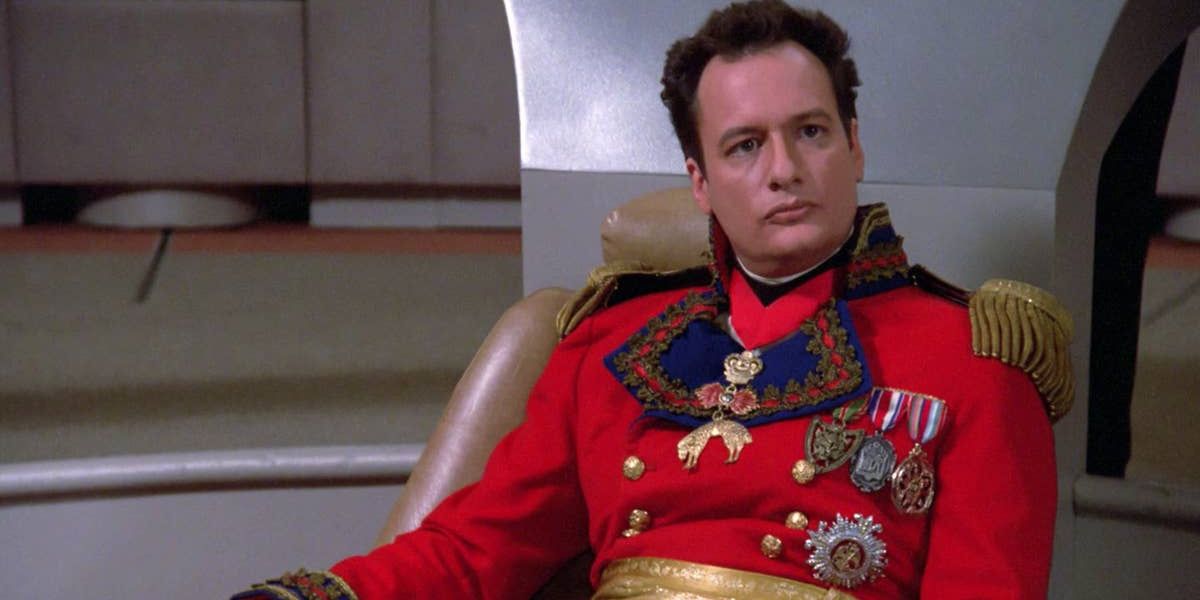The Mirror Universe has become a staple of Star Trek, with over a dozen episodes depicting a parallel reality where humanity’s baser instincts triumphed. It began with The Original Series Season 2, Episode 4, “Mirror, Mirror” and continued through Star Trek: Discovery, with Michelle Yeoh’s “Mirror refugee” Philippa Georgiou rumored to be the focus of a future Star Trek series. The notion has served the franchise well by presenting fan-favorite characters in new ways and comparing good and evil in its central figures.
A fan theory posits an intriguing origin to the Mirror Universe, namely that Q created it. The theory holds little direct evidence to back it up, but it makes a great deal of sense thematically. With Star Trek: Picard’s upcoming second season focusing on Q, the theory has picked up some notice. It focuses on the “test” Q is supposedly putting humanity through. The Mirror Universe is the control group.
What Is The Mirror Universe?
The Mirror Universe is a parallel universe in which the course of history has taken a much darker turn. Instead of leading a benevolent Federation of sentient species, humanity has carved an empire in space, and rules it through brutality, subterfuge and fear. Captain Kirk and members of his crew inadvertently traveled there in "Mirror, Mirror," and appeared to set things right when they left. The empire eventually crumbled, as revealed in Star Trek: Deep Space Nine Season 2, Episode 23, "Crossover," though the darkness and cruelty of the universe's inhabitants never did.
As for Q, the cosmic entity first appears in the pilot episode of Star Trek: The Next Generation, “Encounter at Farpoint,” in which he put Captain Picard and members of his crew on trial for the crimes of humanity. Picard admonished Q to test the Enterprise-D to see if 24th century humanity is indeed still as savage and barbaric as he claimed, and Q agreed. Though the test was presumably the events at Farpoint Station that followed, Q’s continued periodic reappearance in the Enterprise’s life suggests otherwise. The trailer for Picard season 2 contains a quote from the entity saying that “the trial never ended,” which suggests very strongly that the entire affair has been ongoing in perpetuity.
Q May Have Created the Mirror Universe for Fun
The fan theory begins with that notion and expands on it. It encompasses a key point from another fan theory: that Trelane, a seemingly omnipotent villain from The Original Series Season 1, Episode 17, “The Squire of Gothos” is actually a Q. That episode mentioned that he had been watching Earth for 900 years, a period which likely encompasses the point where the Mirror Universe diverged from the Prime one. If that’s the case, it can easily encompass Q’s test, including periods in human history he cited in his mock trial.
Within that framework, the Mirror Universe essentially becomes the control group: how history would unfold if Q didn’t intervene for the benefit of mankind. The theory assumes that Q secretly likes humanity and wants them to do well. So he steps in here and there to assist, notably in episodes like Star Trek: The Next Generation Season 2, Episode 16, “Q Who?,” in which he essentially warns humanity about the Borg. A few more tweaks along those lines, and the better angels of humanity emerge to form the Federation of the 24th century. The Mirror Universe then serves as a perfect contrast to those changes, depicting an infinitely more savage humanity without the guidance of a higher being. Its development alongside the Federation could thus chart the differences of Q influence and demonstrate how humanity can do better than it might on its own. That doesn’t explain the periodic crossover between universes, but given humanity’s innate curiosity on both sides, that isn’t hard to justify.
Almost no direct evidence exists in support of the theory. It simply adheres to presently known facts. It also explains why Q has never appeared in the Mirror Universe, nor has his primary nemesis, Picard – at least in canon. This provides little more than circumstantial evidence at best. Still, nothing directly refutes the idea, and while it may never become broached in canon, the upcoming season of Picard at least holds out some possibility. As head canon, however, it remains quite serviceable, while adding another layer to the endlessly fascinating relationship between The Next Generation’s captain and his first, greatest antagonist.



